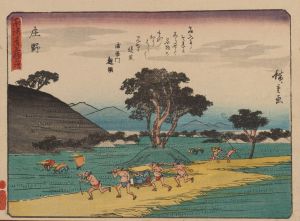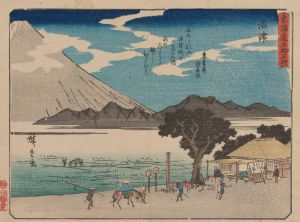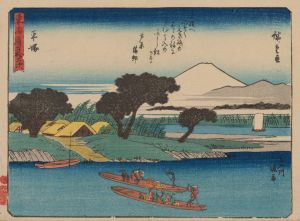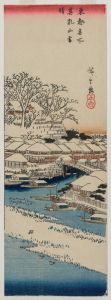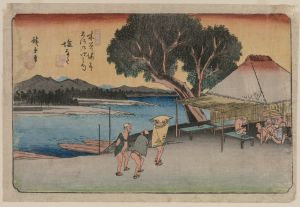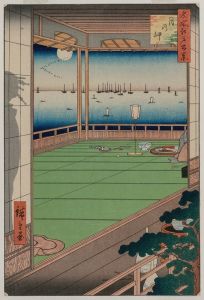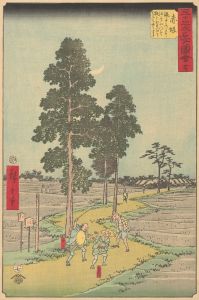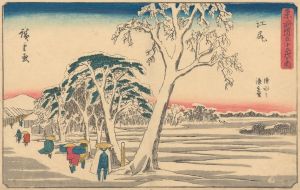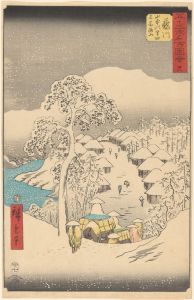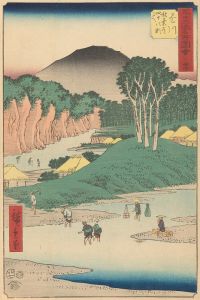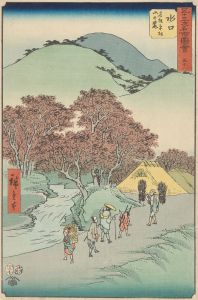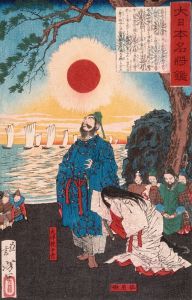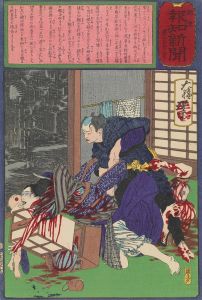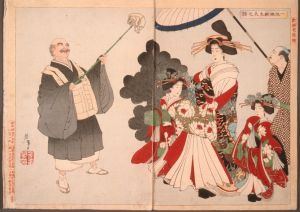
Odawara
A hand-painted replica of Andō Hiroshige’s masterpiece Odawara, meticulously crafted by professional artists to capture the true essence of the original. Each piece is created with museum-quality canvas and rare mineral pigments, carefully painted by experienced artists with delicate brushstrokes and rich, layered colors to perfectly recreate the texture of the original artwork. Unlike machine-printed reproductions, this hand-painted version brings the painting to life, infused with the artist’s emotions and skill in every stroke. Whether for personal collection or home decoration, it instantly elevates the artistic atmosphere of any space.
Andō Hiroshige, a renowned Japanese ukiyo-e artist of the Edo period, is celebrated for his landscape prints and depictions of nature. One of his notable works is "Odawara," which is part of the series "The Fifty-three Stations of the Tōkaidō." This series, created in the early 1830s, is among Hiroshige's most famous and captures the scenic beauty and cultural significance of the Tōkaidō road, the main travel and transport artery of Japan during the Edo period, connecting Edo (modern-day Tokyo) with Kyoto.
"Odawara" is the ninth station in the series and is located in present-day Kanagawa Prefecture. The print depicts the landscape and activities around the Odawara station, which was historically significant due to its strategic location near the Hakone Pass and its proximity to Odawara Castle, a major stronghold during the Edo period. The castle was an important site for the ruling Hōjō clan and later served as a key point of control for the Tokugawa shogunate.
Hiroshige's depiction of Odawara captures the essence of travel and daily life during the Edo period. His work is characterized by its use of vibrant colors, attention to detail, and ability to convey the atmosphere of the scene. In "Odawara," Hiroshige employs these techniques to illustrate the natural beauty of the area, often focusing on the interplay between human activity and the surrounding landscape. The print typically features travelers on the road, local inhabitants, and the natural scenery, such as mountains, rivers, and trees, which are common elements in Hiroshige's landscapes.
The "Fifty-three Stations of the Tōkaidō" series was a commercial success and played a significant role in popularizing the ukiyo-e genre. It also contributed to the increased interest in travel and tourism within Japan during the Edo period. Hiroshige's work provided a visual guide to the Tōkaidō road, offering viewers a glimpse into the diverse regions and cultures along the route. His prints were not only artistic achievements but also served as valuable historical documents that captured the essence of Japanese life and landscape in the 19th century.
Hiroshige's influence extended beyond Japan, impacting Western artists such as Vincent van Gogh and Claude Monet, who admired his use of perspective and composition. His work is often credited with inspiring the Japonisme movement in Europe during the late 19th century, which saw a fascination with Japanese art and culture among Western artists and collectors.
Today, Hiroshige's "Odawara" and the entire "Fifty-three Stations of the Tōkaidō" series are celebrated for their artistic merit and historical significance. They are considered masterpieces of the ukiyo-e genre and continue to be studied and appreciated for their contribution to the understanding of Japanese art and culture during the Edo period. Hiroshige's ability to capture the transient beauty of nature and the human experience remains influential, and his works are held in high esteem in museums and collections worldwide.





